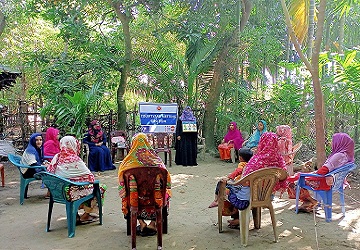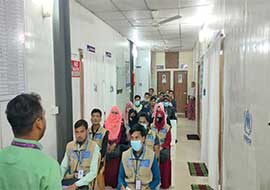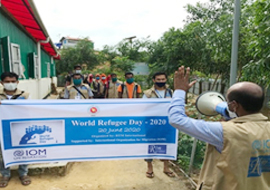RTMI-Pathfinder International SRHR Project
Title of the Project:
Rohingya Refugee Support-“Continued SRHR support for Rohingya Refugees in Cox’s Bazar”
Client:
The David and Lucile Packard Foundation through Pathfinder International
Period:
January 2019 to August 2022
Project area:
Camp 22 (Unichiprang) and CC (MinaBazar), Teknaf
Description of the Project:
RTM International is working with the Rohingya population since 2008 and started working with Pathfinder International (with Packard Foundation support) in late 2019. This project will be continued up to 18 August 2022. The overall goal of the project is to provide technical support to the project in the areas of maternal, SRH and GBV services by increasing local capacity to better handle the needs of the refugees and the Bangladeshi host community. The project aims to further strengthen the on-going activities for the target population to provide family planning (FP), maternal and child health (MCH) including nutrition, post-abortion care (PAC), Gender Based Violence (GBV) and adolescent health care services by increasing capacity of the front line service providers, ensuring quality services (both directly and referral support), improving community engagement and demand for services, and strengthening capacity and commitment of local stakeholders to advocate for SRHR services in humanitarian settings, particularly taking into consideration the present COVID 19 pandemic situation in the country. The project activity has been implemented as per project work plan. RTM maintained good relations and worked closely with all GOB functionaries and other concerned stakeholders in managing one Health Post (HP) and one Community Clinic (CC). The project has recruited essential staffs, procured medicine, medical and contraceptive supplies and equipment in compliance with minimum essential service package set by Health sector. The project ensured quality services by providing training to doctors and paramedics and other relevant staffs (including out-reach workers) on regular basis by engaging internal training cell and external health actors. Efforts have been made for quality assurance includes standard infection prevention, adequate drug supplies and ensuring patients feedback mechanism on service satisfaction.
.
-
Current Information
-
Activities Pictures
RTM International are implementing Health Support and research activities in the different Districts of Bangladesh which are funded by different Donors.
RTMI-UNFPA Project

Courtyard meeting organized by RTMI-UNFPA
RTMI-UNHCR Project

CHW training on scabies prevention
RTMI-IOM Project

World Refugee Day - 2020
